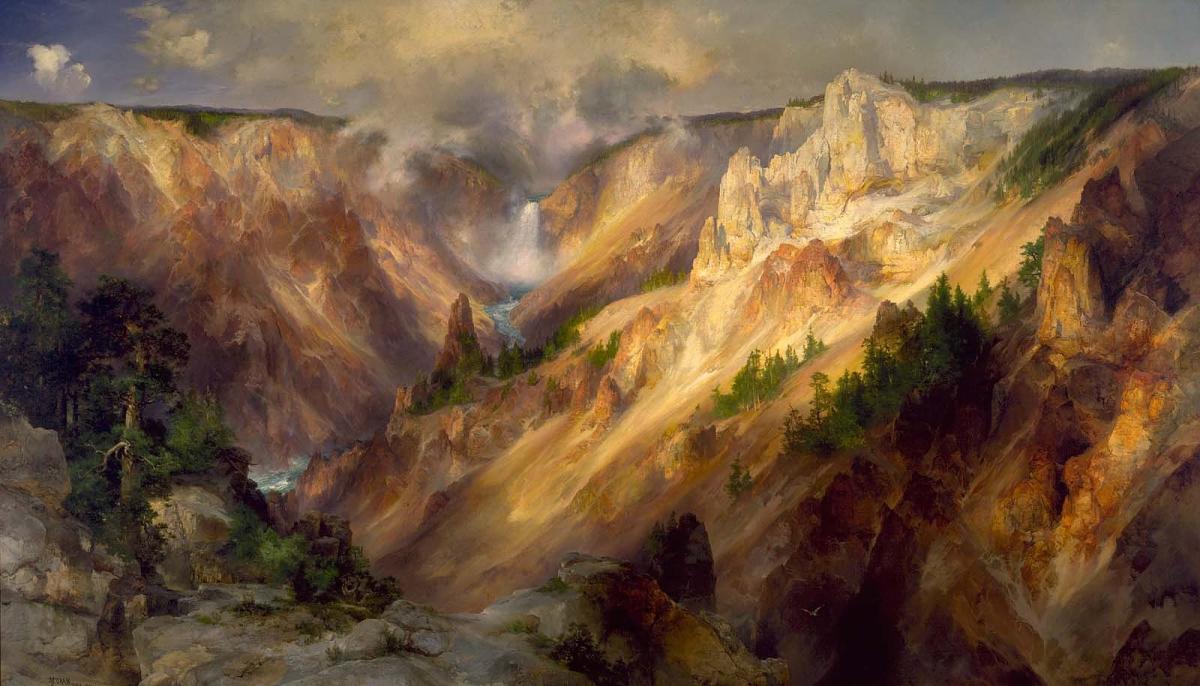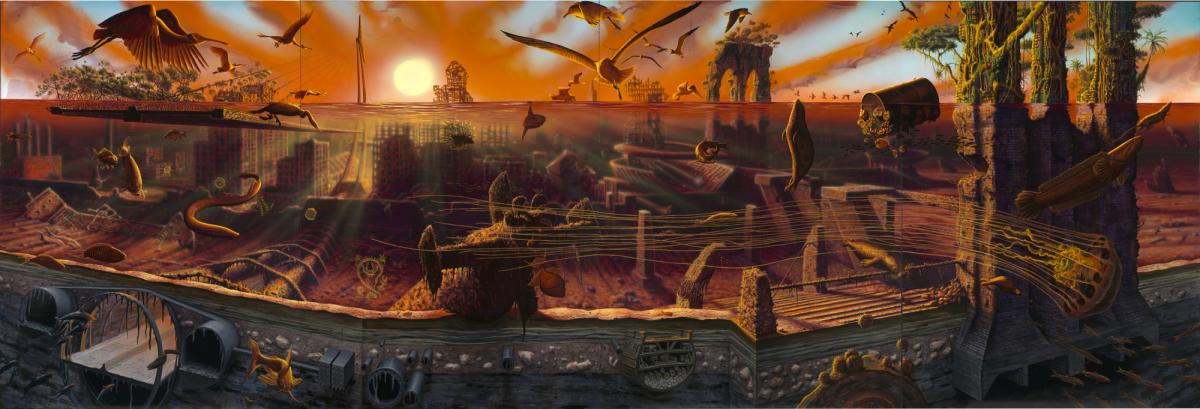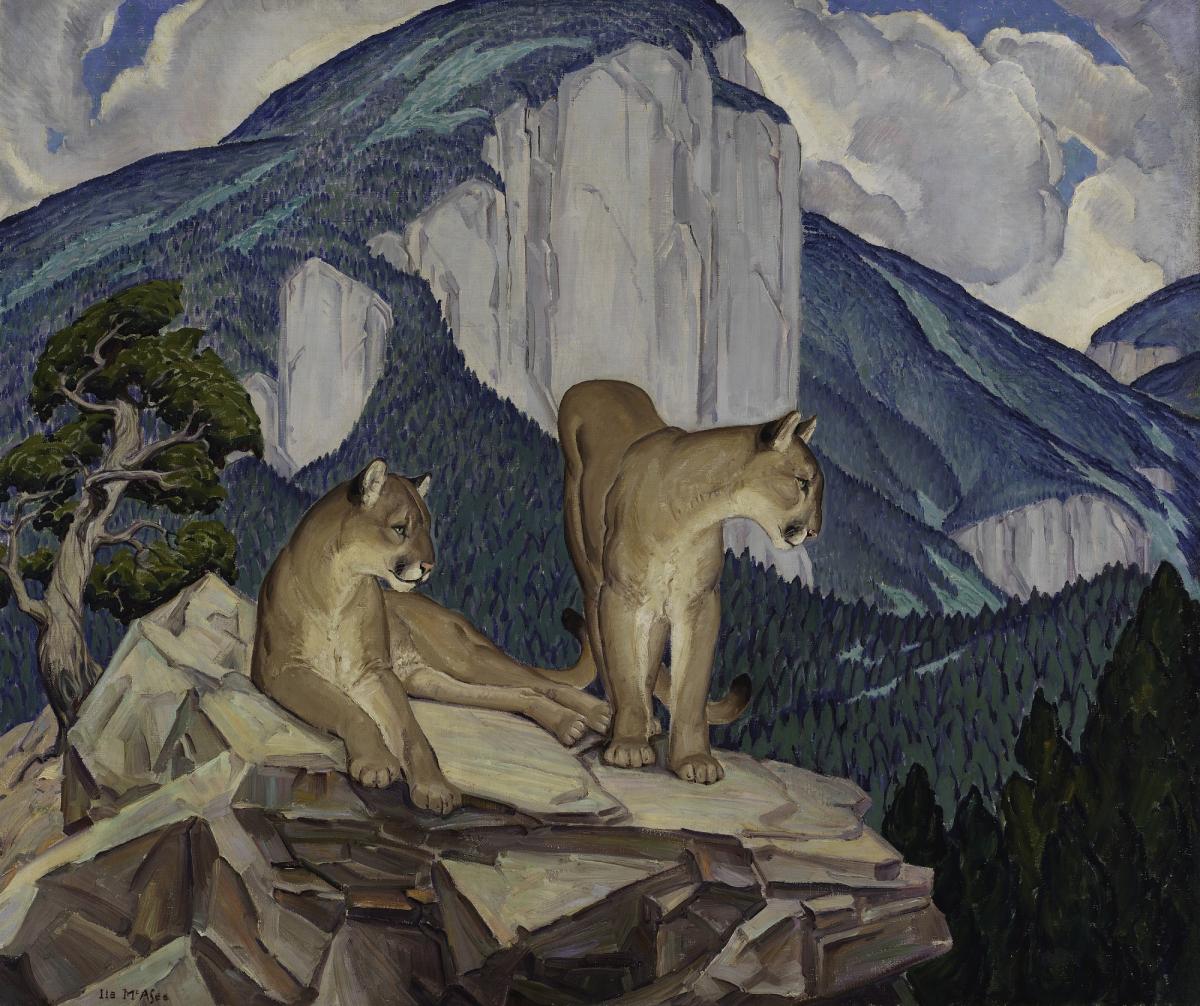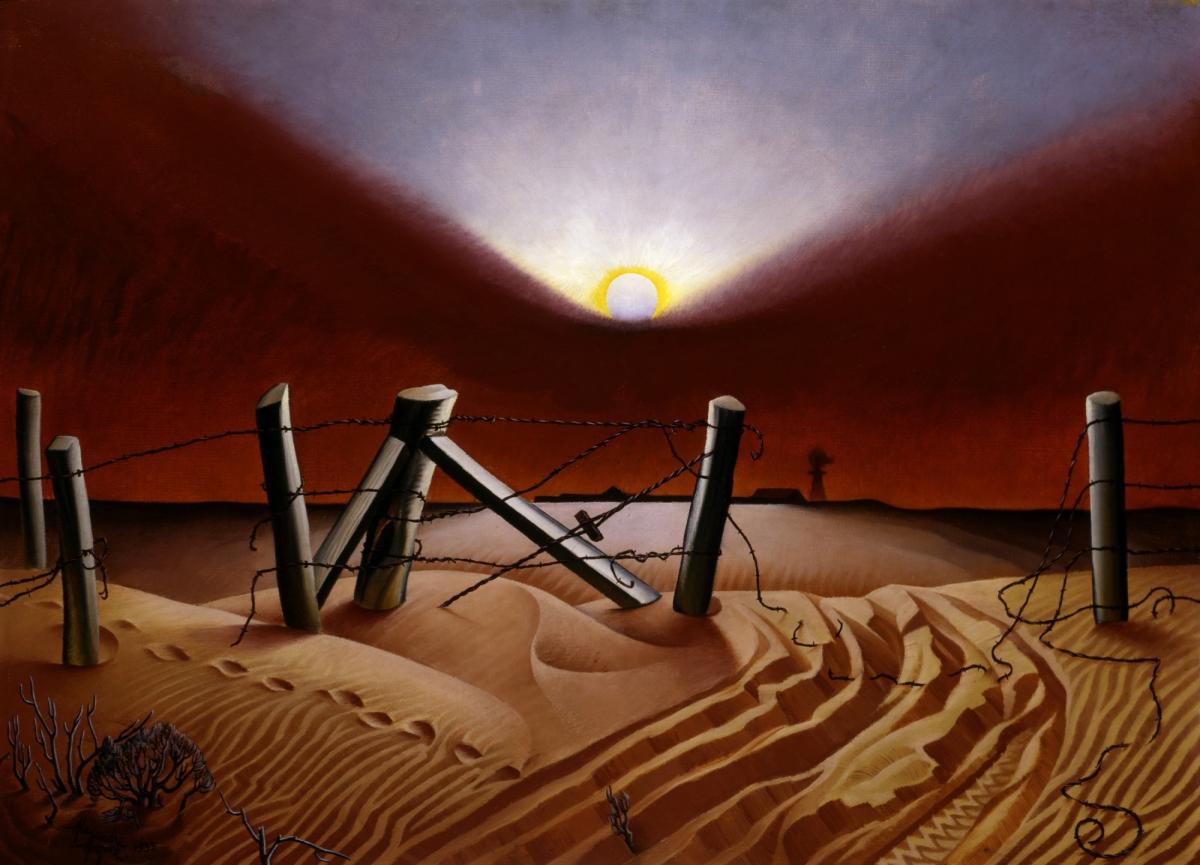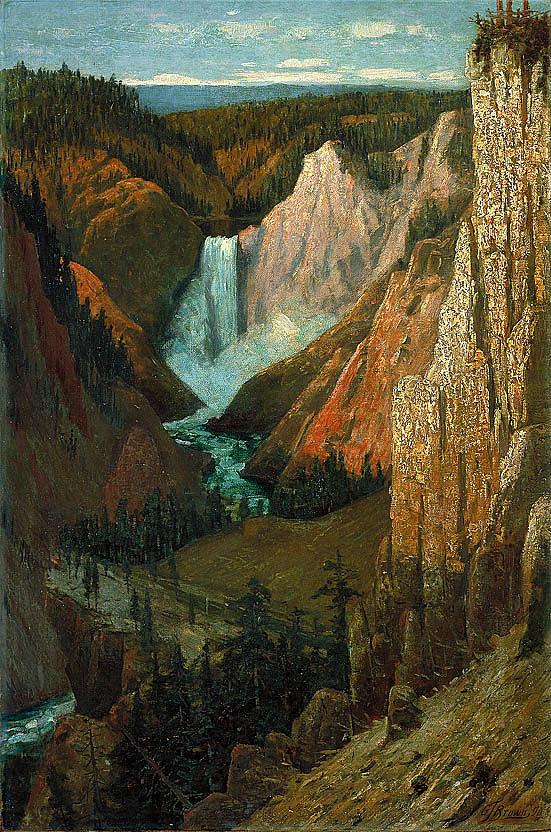What do an epic nineteenth-century landscape that inspired the designation of a national park and a twenty-first-century post-apocalyptic scene hinting at a hopeful future have in common? Together, Thomas Moran’s The Grand Canyon of the Yellowstone and Alexis Rockman’s Manifest Destiny present a reflection of a society wrestling with the importance of the natural world and the human impact on it: both past and future. With Earth Month coming to an end, we're reminded of the relationship between art and the natural world and the dialogue that enlightens both.
Reflecting on the relationship between these grand landscapes and how artists might speak to our future, Philip Kennicott notes that, "[t]his is a dialogue among equal interlocutors, which suggests that large-scale landscape painting is still a vigorous form...and it could play a vital role in how twenty-first-century Americans grapple with the destruction we are wreaking on the planet." Moran's painting of Yellowstone presents the iconic view of the first National Park. It was painted in 1893 and exhibited that year at the World's Columbian Exposition in Chicago. The painting literally served as a backdrop for William Jackson Turner's "Frontier Thesis" speech, in which he declared the frontier "closed" and that all that was left was to fill in the open spaces, thereby setting off a panic about the loss of wilderness. The issue of why we preserve iconic landscapes, and what we fear will happen if we don't, is at the core of a recent installation at the museum.
Alexis Rockman's monumental history painting, titled Manifest Destiny, takes the name of America's frontier imperative and gives it an ironic and heartbreaking twist: what happens if we don't exercise responsible stewardship of our environment? Rockman’s piece speaks to the fear of what happens if we don’t preserve our environment, presenting a stark contrast to Moran’s untouched wilderness. Rounding out the group, three twentieth-century landscapes represent different perspectives on land stewardship, painted by artists who represent a more diverse cross-section of the population.














